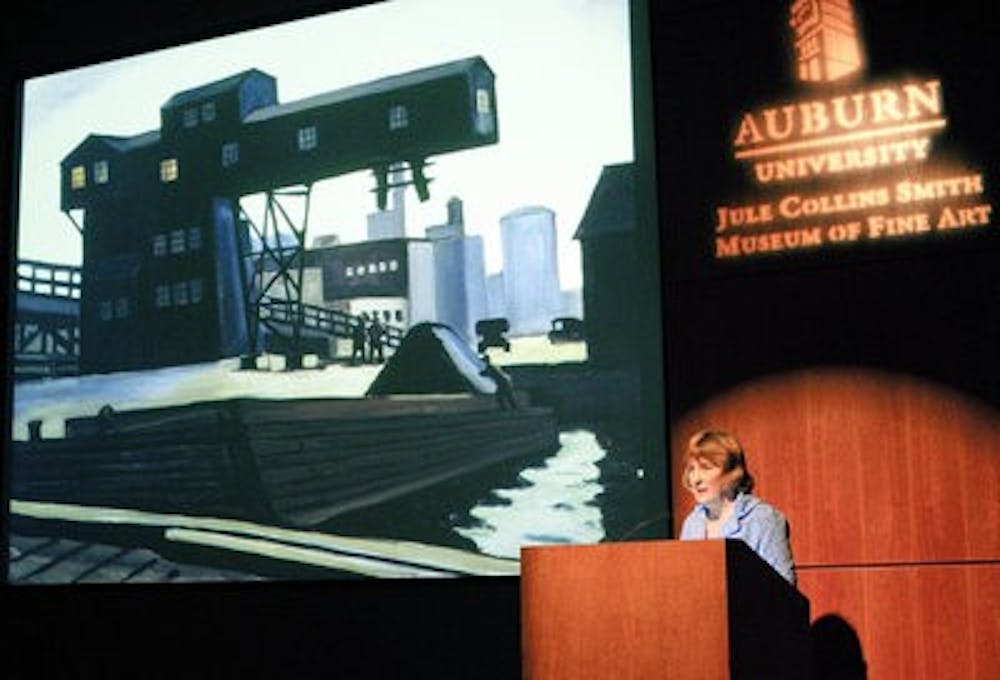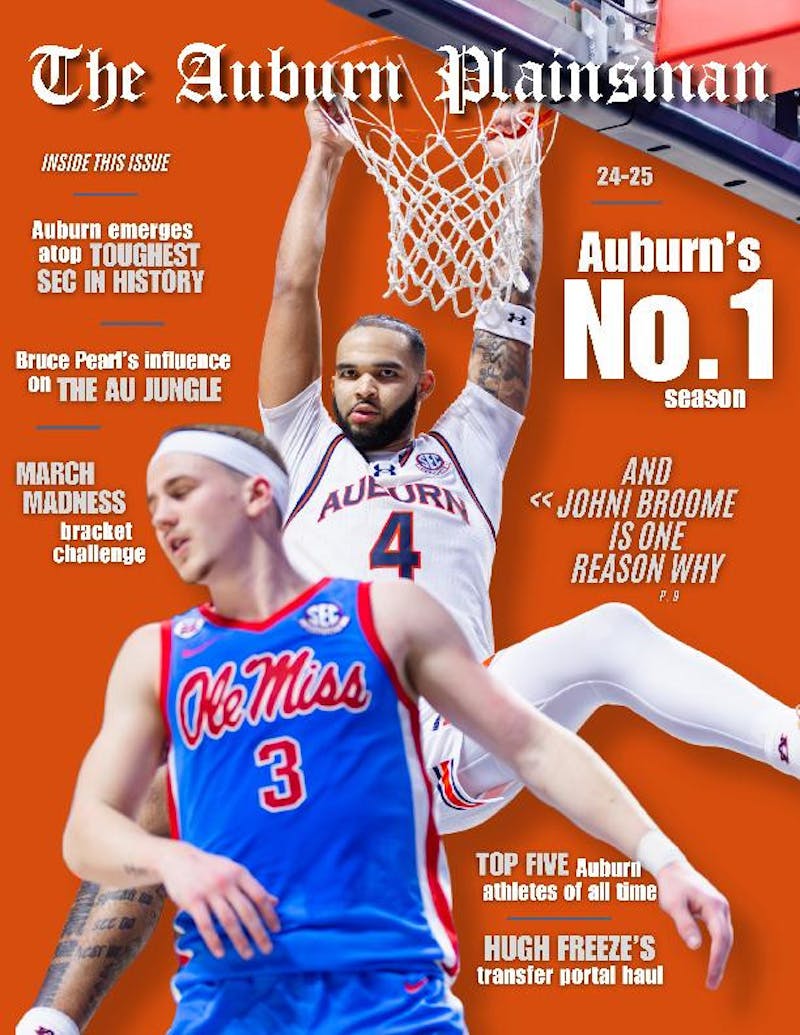The Great Depression came to life in the Jule Collins Smith Museum of Fine Art last Thursday.
The museum was host to Elizabeth Broun, director of the Smithsonian American Art Museum, who conducted a lecture titled "1934: Artists Respond to the Great Depression."
The event was organized in collaboration with Auburn University's Caroline Marshall Draughon Center for the Arts and Humanities and was one of a series of programs on Alabama's Works Progress Administration.
"We'd hoped to really draw attention to Alabama's WPA history, which is very rich," said Jay Lamar, director of the Center for the Arts and Humanities.
The lecture began at 4 p.m. in the museum's auditorium.
Its focus was to bring awareness to the way art was affected by federal sponsorship during the Great Depression and how it portrayed the lifestyles and attitudes of the time.
"The arts are truly a mirror of whatever time and place they were made," Broun said.
Broun began with a brief discussion of the history of the public works project during the Great Depression.
"Along comes the Great Depression and with it one of the finest experiments of federal patronism of the arts," she said.
The project began in December 1933 and was closed in June 1934.
During this time, approximately 3,600 artists were registered with the program, and almost 15,000 works of art were produced.
Following this introduction, Broun began a slideshow of works of art produced during the Great Depression.
The art featured in the slideshow is a collection of 56 pieces held by the Smithsonian, all produced under the public works experiment.
"These artists were told only one thing: go paint the American scene," Broun said.
The art in the slideshow expressed several different attitudes toward life during the Depression, with many pieces focused specifically on industry.
"What they (people during the Great Depression) needed was work," Broun said. "And so workers are celebrated."
Works in the slideshow expressing this attitude included "Gold is Where You Find It" by Tyrone Comfort and "Natural Power" by Raymond Skolfield.
Other works of art conveyed an optimistic view of life during the Depression, with many pieces portraying normal activities without the despair one would expect them to contain.
Agnes Tait's "Skating in Central Park" was another example.
"In 1934, there were just plenty of people out of work who were ready to put on their skates and go skating," Broun said.
Multiculturalism was another surprising subject portrayed by artists of the Great Depression. Since many artists of the time were immigrants, they embraced the variety of cultures present in America.
Broun said such works of art were "a reminder that the American scene could encompass some thoroughly broad subjects."
She concluded her presentation by restating the idea that the public works experiment was an integral part of American history.
"The point here is how this little six-month period captured something quite extraordinary and wonderful," she said. "It's kind of a special moment where we could see what would happen if artists were truly brought in."
The event was attended by a mix of students and nonstudents.
"We were hoping to bring in people to the museum who had not been there before," Lamar said. "Also to get faculty, students and townspeople to sort of have that common experience of having dialogue and engaging in question and answer."
Audrey Maze, graduate student in public administration, was especially interested in paintings that showed the positive side of the Great Depression.
"I was interested to see how art did depict what life looked like back then and what people wanted it to look like," she said.
The lecture was her first experience at the museum, but she said she hopes to return in the future.
The museum expects Broun's lecture to be the last in this particular series, but will announce upcoming events throughout the semester.
Do you like this story? The Plainsman doesn't accept money from tuition or student fees, and we don't charge a subscription fee. But you can donate to support The Plainsman.





